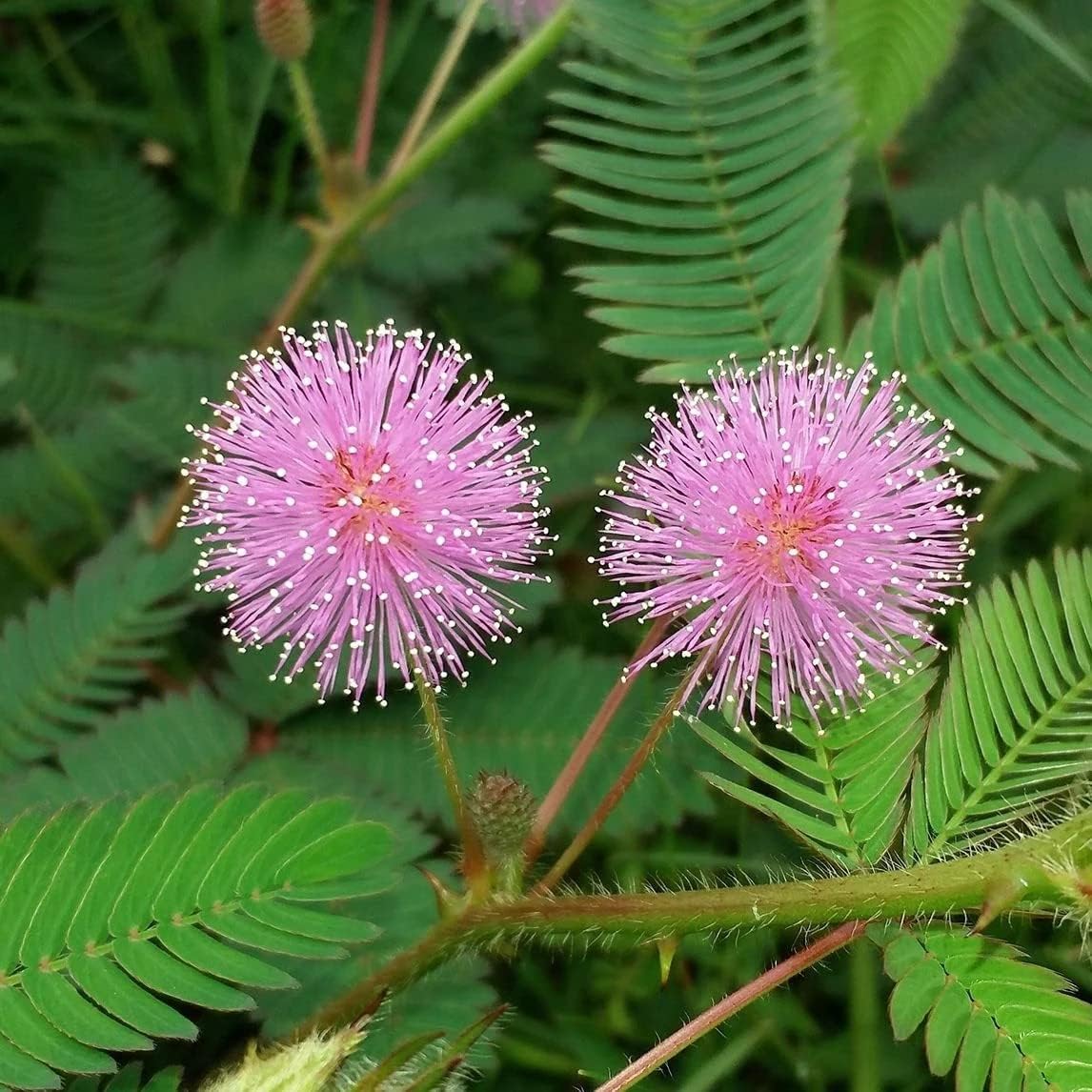
Dharaseeds
Mimosa Seeds - Sensitive Plant Seeds
Estimated Free Delivery between April 16 and April 19.
Secured Payment Methods
Your transaction is protected with advanced security measures to keep your information confidential
Mimosa pudica, commonly known as the Sensitive Plant, is a fascinating tropical plant that is famous for its unique ability to respond to touch. When its leaves are disturbed, they fold up in a rapid, dramatic display, making it a popular plant for curious gardeners and those interested in botanical phenomena. It’s a fast-growing plant that thrives in warm conditions and is often grown for its novelty as much as its decorative qualities.
Key Benefits
- Interactive Plant: Known for its "sensitive" nature, Mimosa responds to physical stimuli by folding its leaves. This fascinating movement makes it a great educational plant for children and a fun conversation piece.
- Attractive Foliage: The plant has feathery, fern-like leaves that are lush and vibrant, adding ornamental value to gardens and homes.
- Fast-Growing: Mimosa is a fast-growing plant that can thrive both indoors and outdoors under the right conditions.
- Pollinator-Friendly: The plant produces delicate pink flowers that attract pollinators, including bees and butterflies, enhancing biodiversity in gardens.
- Edible Uses: The young leaves and seeds of the Mimosa plant can be used in some traditional medicines and edible preparations, though care must be taken as it is not widely cultivated for food.
Variety Features
- Height: Typically grows 12 to 36 inches tall, depending on the growing environment.
- Leaves: The leaves are small, delicate, and feathery, folding up when touched.
- Flowers: Mimosa produces round, fluffy, pink flowers in clusters during the warmer months.
- Growth Habit: It has a bushy, sprawling growth habit, and can be grown as a low shrub or in hanging containers.
- Bloom Time: Blooms during the warm months, typically in late spring to summer, depending on climate.
Planting Instructions
Best Planting Season
- Spring or Summer: Mimosa seeds should be planted in the spring or early summer, after the last frost, when the weather is consistently warm. The ideal temperature for planting is between 70°F and 85°F (21°C to 29°C).
Ideal Location
- Light Requirements: Mimosa thrives in full sun but can tolerate partial shade. For best results, plant it in a location that receives at least 6 hours of direct sunlight each day.
- Soil: Prefers well-drained, loamy soil with a slightly acidic to neutral pH (6.0–7.0). It can tolerate slightly sandy or clayey soils, as long as drainage is adequate.
Planting Details
- Sowing Depth: Sow seeds about ¼ inch deep in moist, well-drained soil.
- Spacing: If planting in a garden bed, space seeds or seedlings 6 to 12 inches apart to allow for adequate air circulation and room for growth.
- Germination: Soak the seeds in warm water for 24 hours before planting to enhance germination. Expect seeds to sprout in 1-3 weeks under optimal conditions.
Care Instructions
Watering
- Regular Watering: Keep the soil evenly moist but not waterlogged. Mimosa prefers consistently moist soil, especially during the warmer months, but should not sit in stagnant water.
- Avoid Overwatering: Ensure that the plant is not in a location that retains water for too long, as it can cause root rot.
Temperature
- Warm Environment: This plant is best suited for warm climates and should be protected from frost. It is grown as an annual in colder regions or can be grown indoors as a houseplant.
- Humidity: Mimosa thrives in humid environments, so consider occasional misting or placing the pot on a humidity tray if grown indoors.
Harvesting
- Leaves: While Mimosa is often grown for its ornamental value, its young leaves can be harvested for use in traditional herbal remedies.
- Seeds: The plant produces seed pods after flowering, which can be harvested once they are fully mature. The seeds can be saved for planting the following season or used in specific recipes.
Storage
- Seeds: To store the seeds, allow them to dry thoroughly before placing them in an airtight container in a cool, dry location. Stored properly, seeds will remain viable for up to 1-2 years.
- Leaves: If using for medicinal purposes, fresh leaves can be dried and stored in an airtight container in a cool, dark place.
Culinary Uses
- Traditional Medicine: Mimosa leaves have been used in some cultures for their medicinal properties, particularly for digestive and calming purposes. However, they are not widely used in modern culinary practices.
- Ornamental Use: The flowers are typically grown for ornamental purposes, making a beautiful addition to bouquets or as a natural garnish for floral arrangements.
Conclusion
Mimosa (Sensitive Plant) is an exciting and interactive addition to any garden or indoor space. With its fascinating leaf movements, attractive foliage, and pink flowers, it is a conversation starter and a fun plant to grow. Whether you grow it outdoors in warm climates or indoors as a novelty plant, Mimosa is sure to captivate with its unique behavior.








